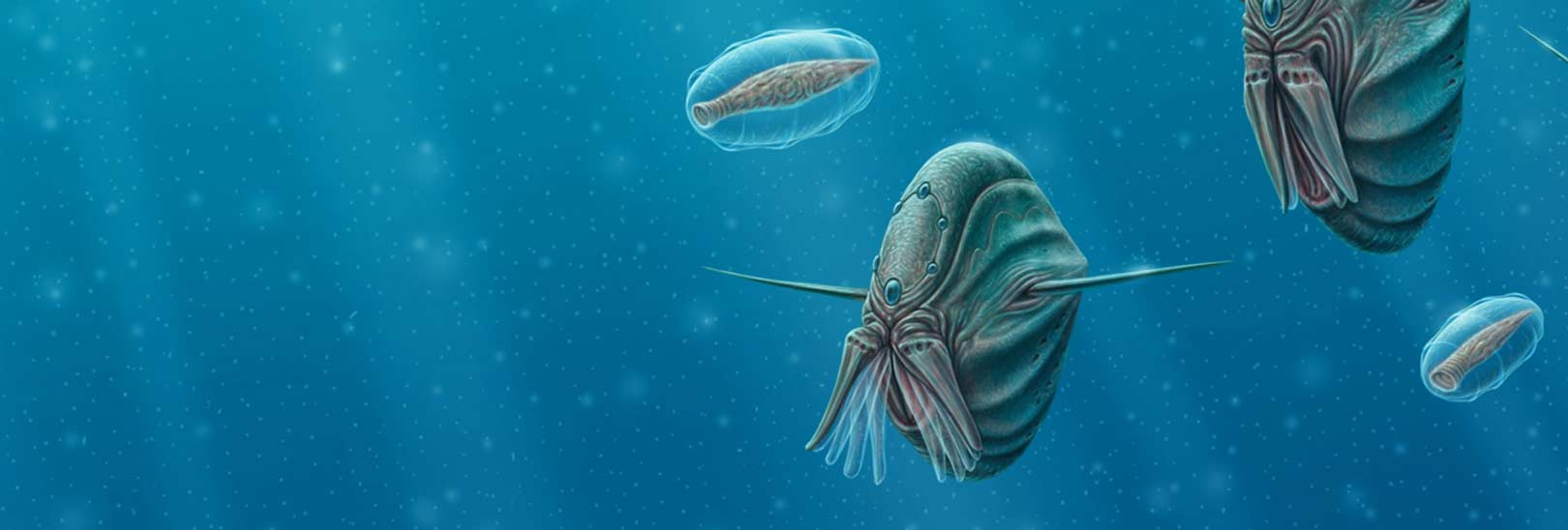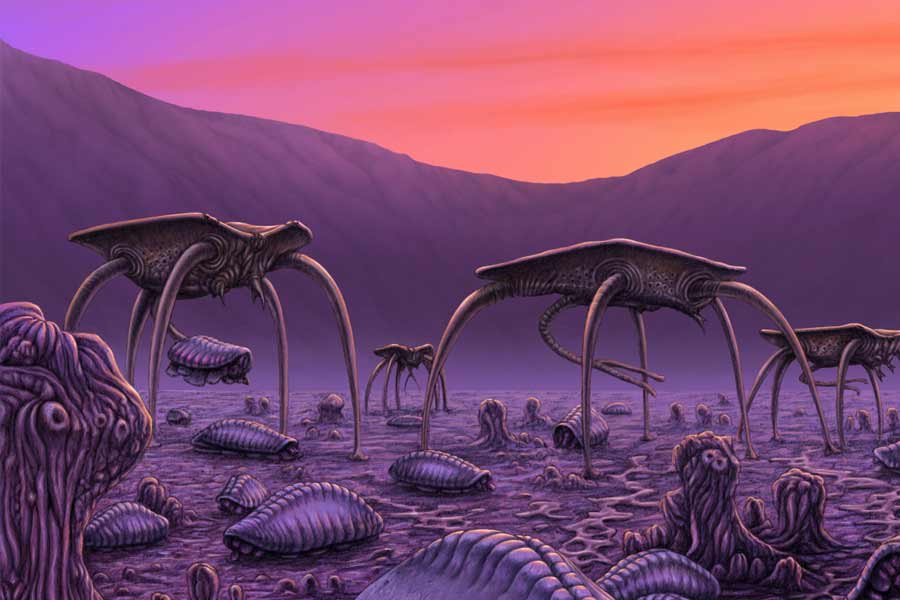Coasts
A showcase of aquatic biodiversity
The perfect conditions for the laboratory of evolution
The parts of the ocean nearest the land experience a confluence of conditions that gives rise to some of the highest levels of biodiversity on the planet. Ample sunlight, combined with nutrient runoff from the land results in a flourishing biome bursting with unique lifeforms. In addition to the main continents, Veteris contains around a million islands each surrounded by a coastal habitat.
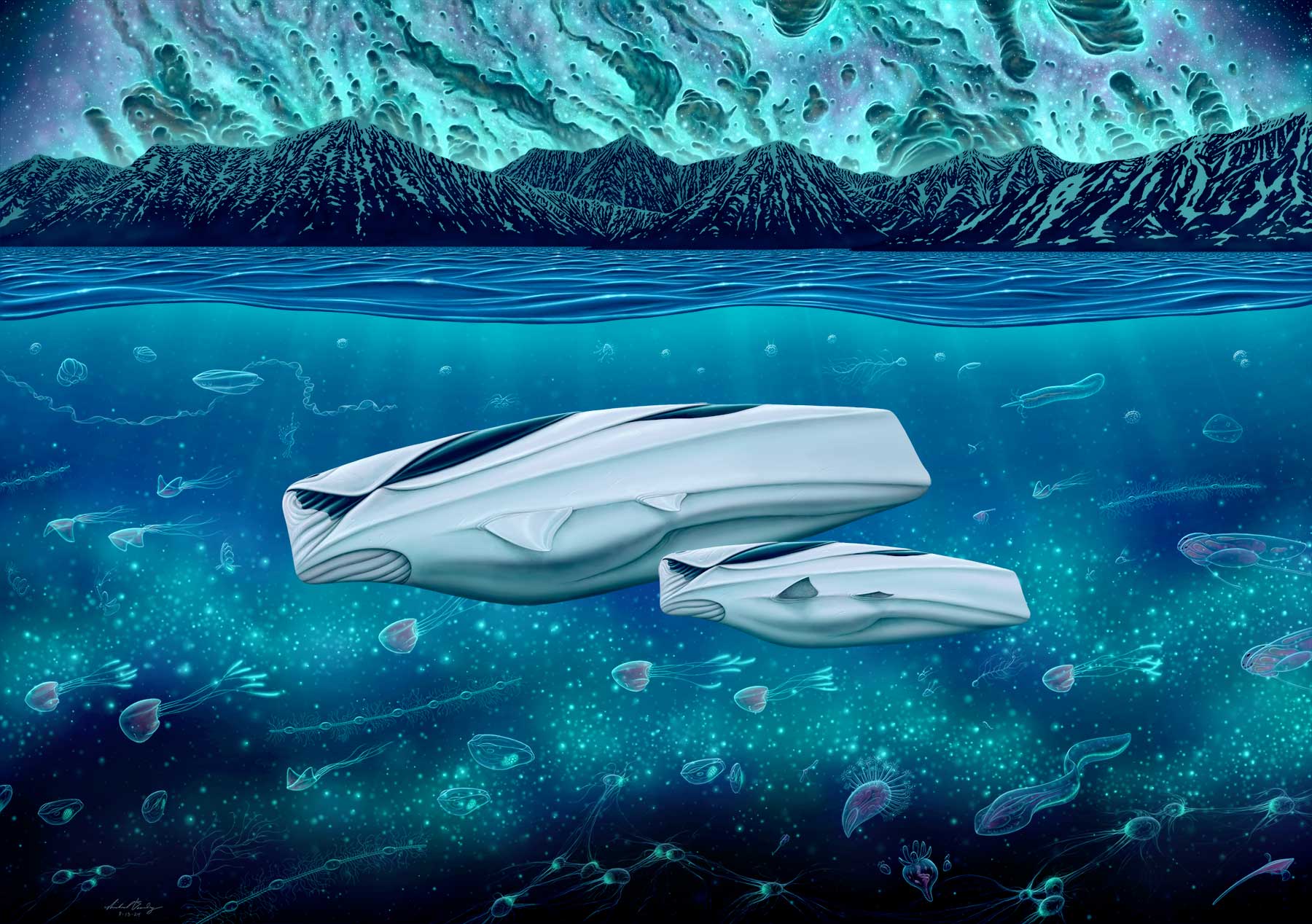
As Above, So Below
2024, Digital
Swimming through a sea of life
Throughout most of the year, the nighttime skies of planet Veteris are illuminated by a vast, brilliant nebula. Tiny photosynthetic organisms multiply during the daylight hours, and after sunset the surface waters become a thick soup of predators ascending from the deep to feed on them. Any creature seen from below will be silhouetted against the glow of the sky above. To prevent becoming easy targets for predation, many blend in by producing their own light. In their swarming multitudes, these billions of incandescent swimmers create biological nebulae beneath the waves. Massive filter feeders like the ghostly white Niveus have no need for such camouflage. Their immense size and surprising speed are enough to keep them safe as they cruise these starry seas.
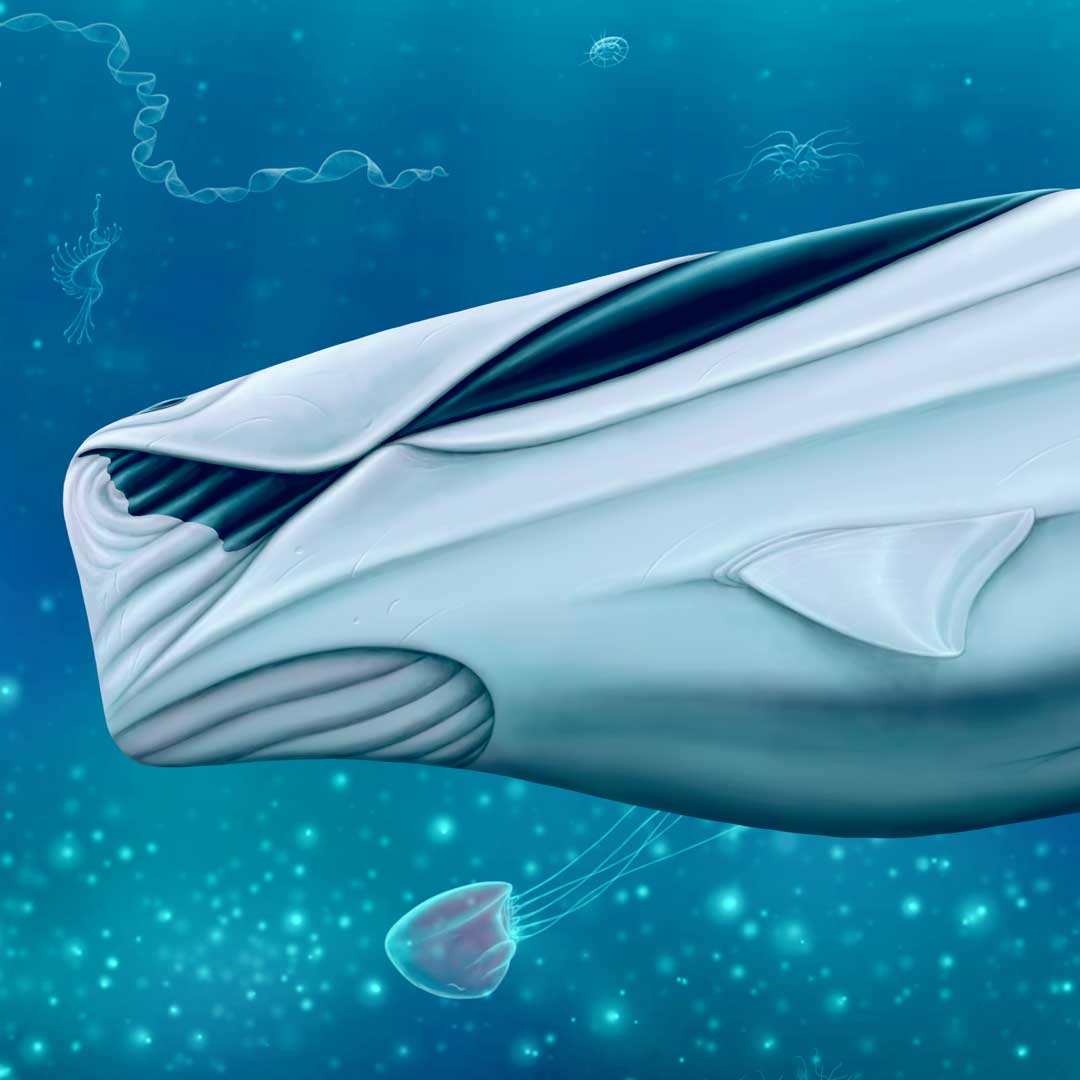
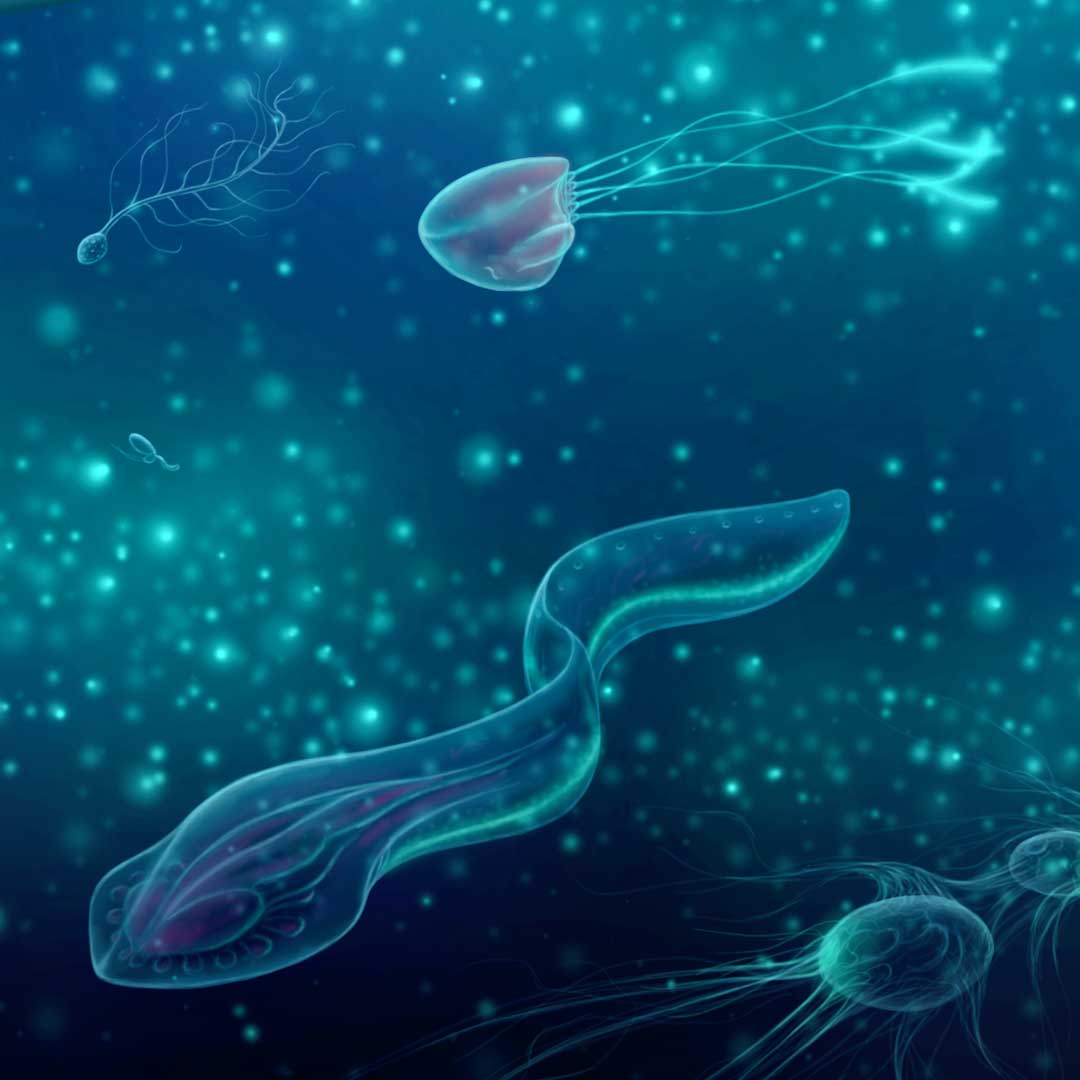


Codependence
2021, Digital
Codependence
Natural selection breeds competition, but it can also lead to sophisticated cooperation. The Glass Colligatio is what is known as a composite organism—a creature comprised of members of multiple species that share critical biological processes between them. The larger swimmer provides mobility, while its multi-legged symbiont feeds more efficiently than it could alone. Through the interspecies junction—a specialized dual orifice connecting the creatures—they share nutrients and oxygen, each specializing in what it does best while providing for the needs of the whole.

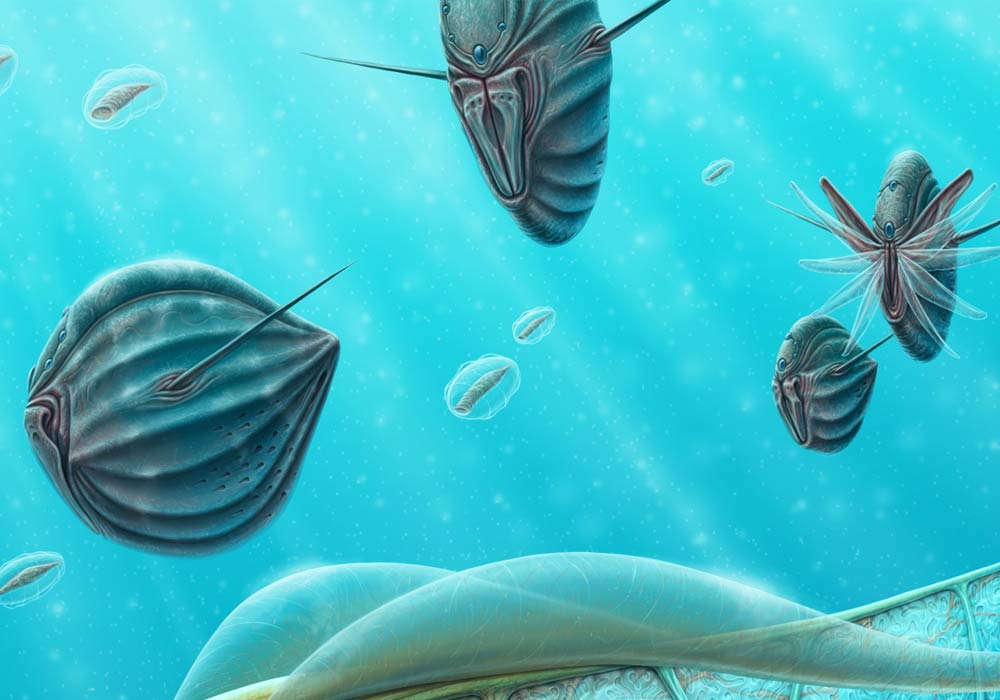
Seaswift and bubble-swimmers
Quick and nimble open-water swimmers, seaswift sport long defensive lateral spines to keep predators at bay. They use sticky transparent membranes to catch particulates from the water and transport them to their mouths. The mouthparts fold inside dual protective covers when not in use. Bubble swimmers are slow-moving filter feeders whose transparent jelly-like shells surround their internal organs. Wave-like ripples in their outer membranes propel them gently through the water.
Opportunistic sand-crawler
Serpos are a family of creatures that creep around the shallow seafloor in search of food. Using dual long front appendages, they grasp and bring morsels to their mouth on the lower side of their body. A serpo's body plan is fairly simple—a hard carapace on top protects a layer of respiratory tissue, swimming fins, and finally a row of rudimentary feet on its underside. When threatened, it nearly buries itself in the sand, with only its impenetrable top plates exposed.
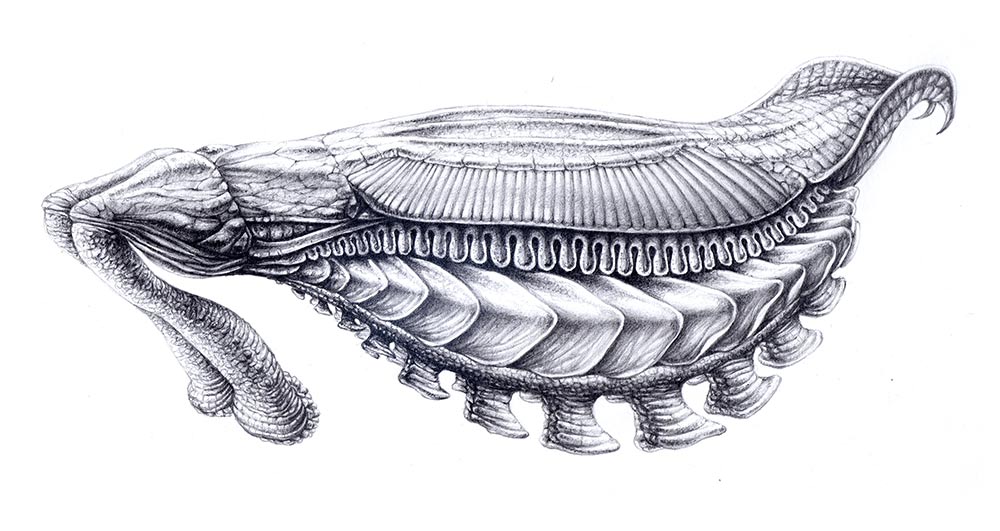
Arenaserpo edurusdorsum
2008, Pencil
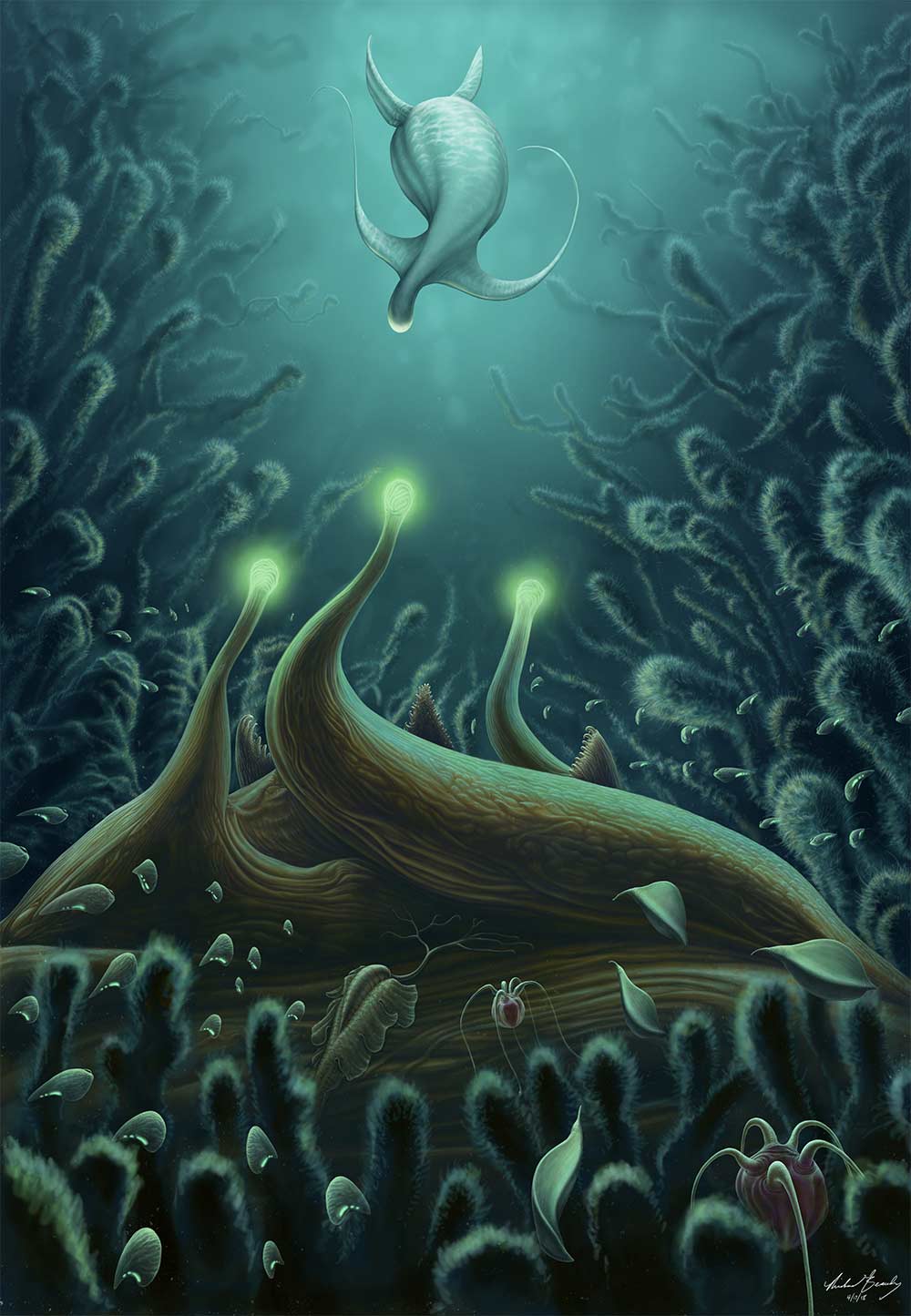
Curiosity
2018, Digital
Beautiful and deadly
A horde of small creatures gathers around the hidden predator in anticipation. The naive Sundancer normally dwells in the bright blue waters above, but is fascinated by the Pellax's biolights—unaware of their true purpose yet destined to fulfill it nonetheless. Through its death, others can continue their lives. This pattern is built into the cosmos and predictably exists anywhere matter arranges itself into biology. The body of the sundancer, like so many before it, will not only feed the pellax, but also the expectant inhabitants of this micro-habitat that depend on the folly of others for their survival.
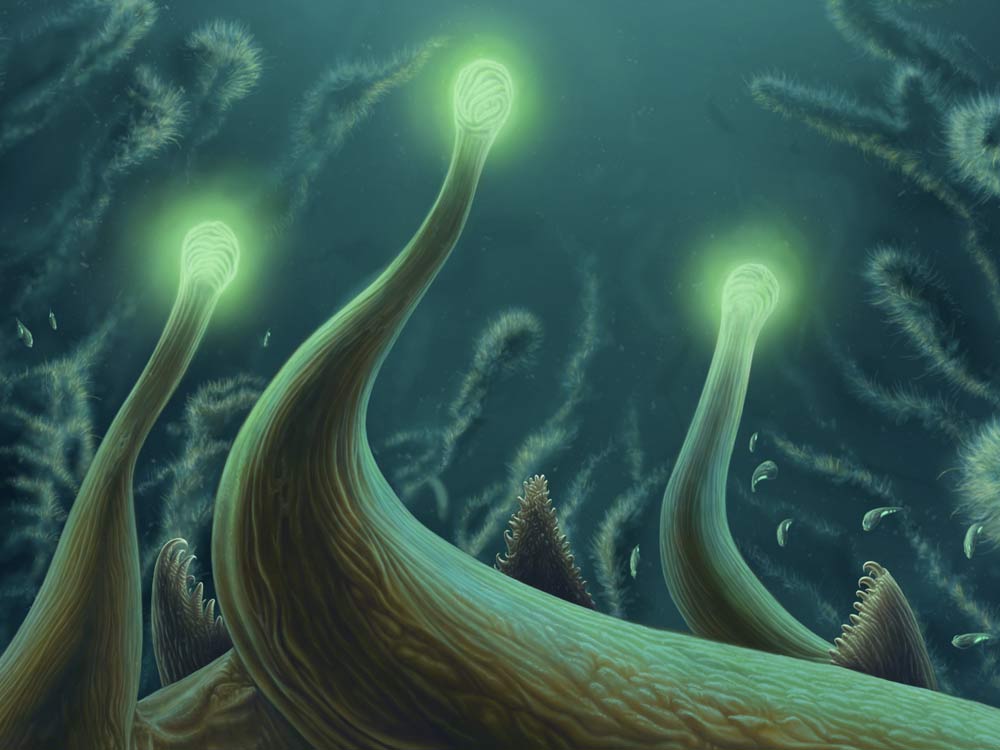
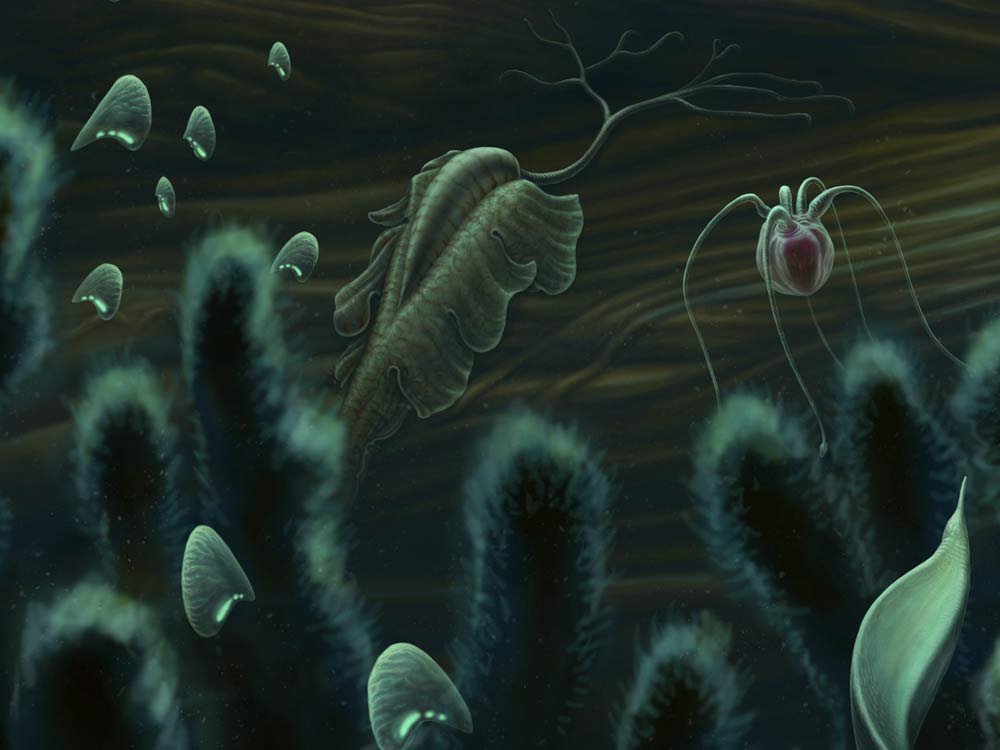
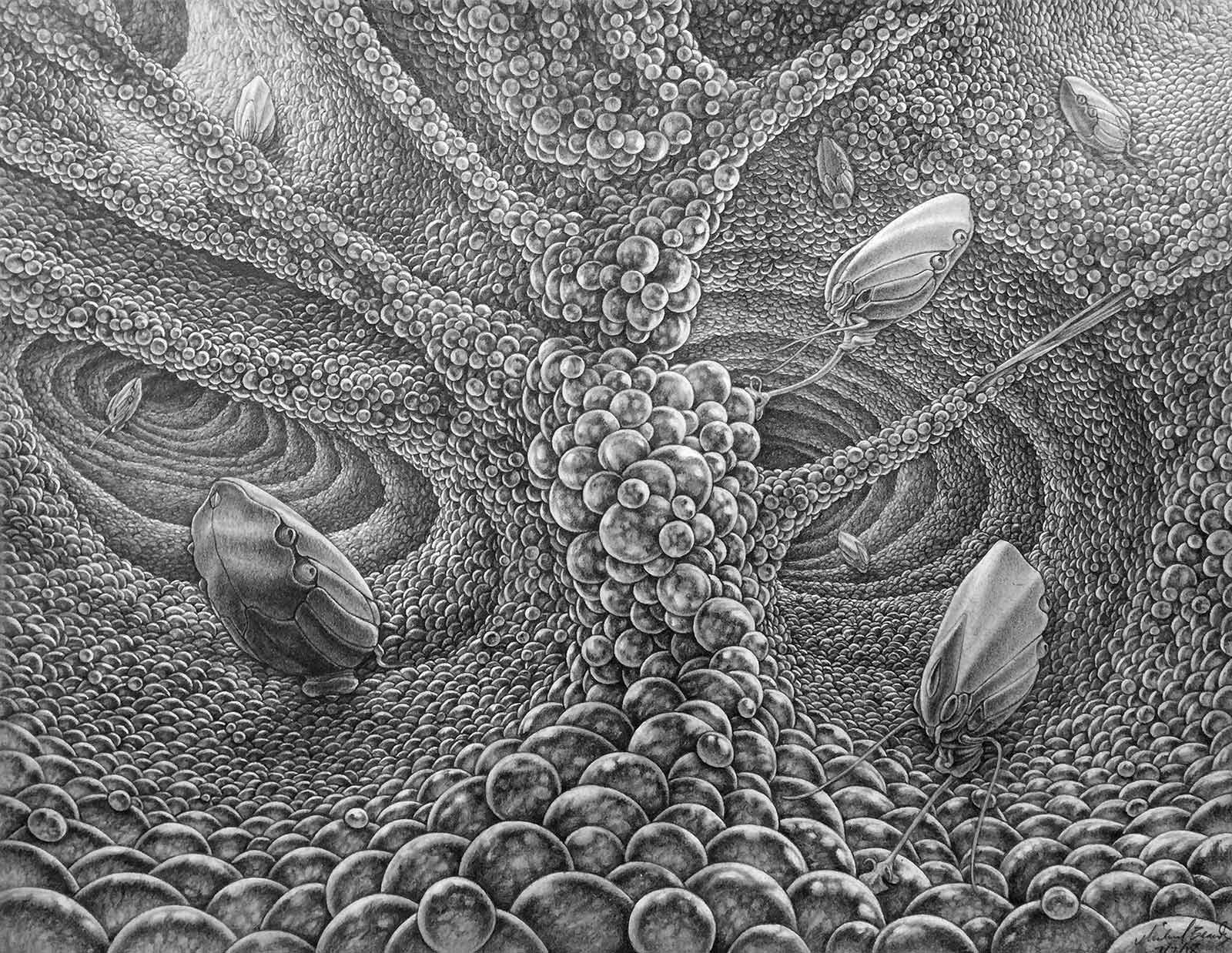
Egg Chamber
2018, Pencil
Blurred taxonomy
In some cases, it is hard to tell the difference between genders and species. Organisms share genetic material more easily on this planet, and that leads to some complicated taxonomy. In this case, a group of aquatic creatures act as nurses for a seemingly endless field of eggs. But the network of underwater chambers in which they reside is in fact another living creature. By some categorizations, it would be considered the female of the species—it produces and to some extent nourishes the field of eggs, some of which mature to be gigantic network-chambers themselves. Whether this is an extreme example of sexual dimorphism, or the result of some sort of horizontal gene transfer is a matter of conjecture at this point.
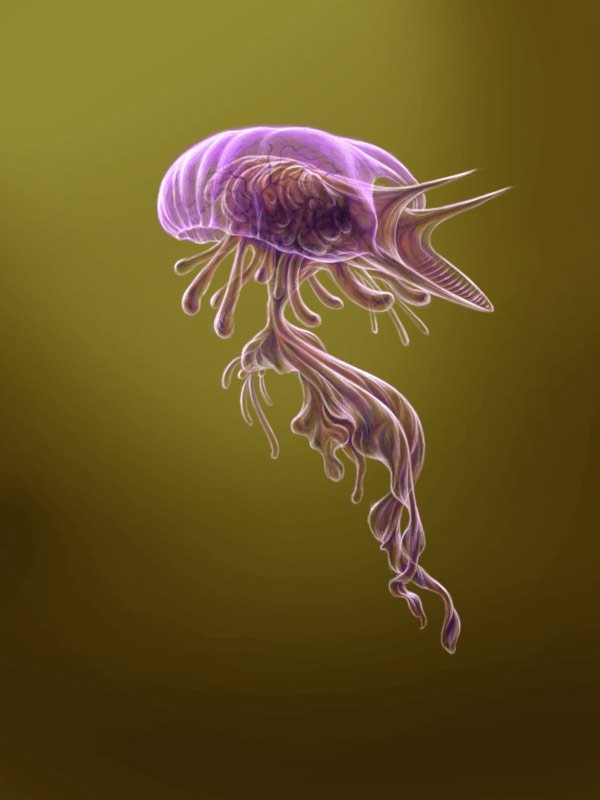
Brain jelly
The evolution of defense
In aquatic environments, creatures composed primarily of soft thin tissue in a simple body plan are usually among the first to evolve, and some of the most common. Featuring a transparent bell structure surrounding its internal organ sac, the brain jelly is indeed a very simple creature. However it features some significant improvements over the anatomy of its ancient predecessors. Grapsing appendages on either side wave through the water as it swims, attracting small prey items with specialized scent emitters and a highly sticky surface membrane. Lower flaps extend downward when not in use, but may be called into service as fins when more speed is needed. But by far evolution's greatest gift to the brain jelly has been its posterior defensive spines. No longer a completely malleable and listless lifeform surviving at the mercy of fate, the brain jelly and related species acquired a means of protection. Somewhere along the generations, a mutation occurred that caused the hardening of a subset of internal membranes, resulting in a creature that was far less susceptible to predation. As natural selection progressed over the eons, offspring with this new feature became more prominent in the gene pool, until they became the standard. Hardened tissue became elongated spines and internal shell, protecting vital organs. What had been a simple molecular mistake transformed the brain jelly from a flimsy, feeble snack into a force to be reckoned with.
